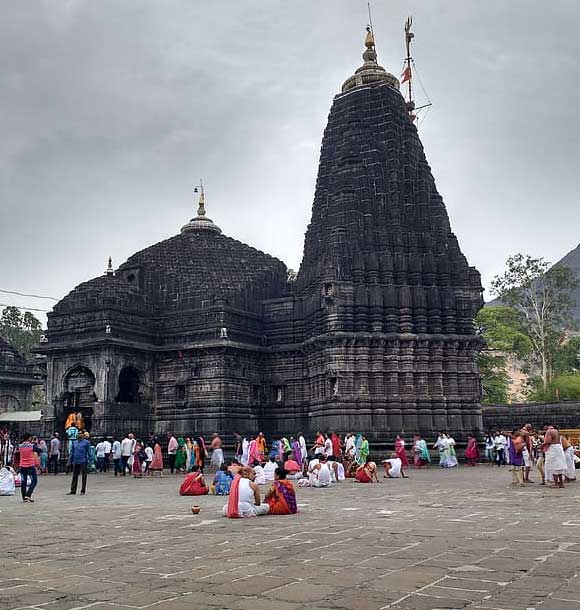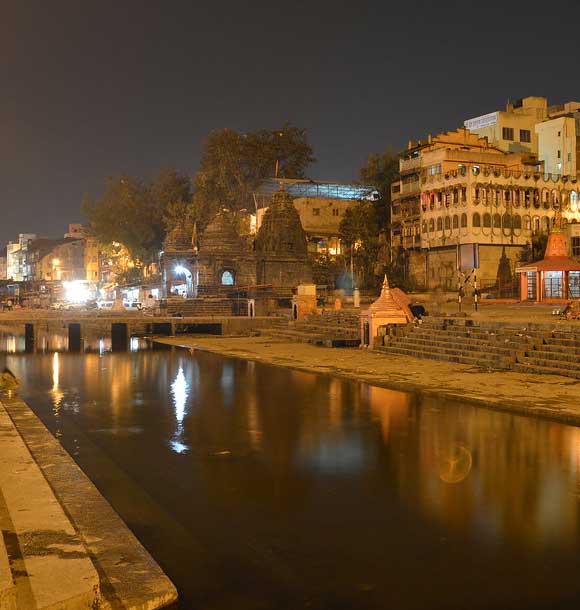
About Nashik
Nashik is a city in Maharashtra, India. Nashik is located in the northwest of India, 180 km from Mumbai and 220 km from Pune. Nashik is the administrative headquarters of Nashik District and Nashik Division. Nashik, which has been referred to as the "wine Capital of India", is located in the Western Ghats, on the western edge of the Deccan peninsula on the banks of the Ganga River. In addition to supplying the name to the famed Nassak Diamond, the city is known for its picturesque surroundings and pleasant climate.
Historical Information
Hindu mythology has it that Lord Rama, the King of Ayodhya, made Nashik his home during his 14 years in exile. At the same place Lord Laxman, by the blessing of Lord Rama, cut off the nose of Shurpnakha and thus this place was named as "Nasik"(From Sanskrit word 'Nasika'). Several other references to the Ramayan era can be found in Nashik, which includes the Sita Gumpha caves, from where Sita, Lord Rama's wife, was abducted by Ravana. Nashik in 150 BC was believed to be the country's largest marketplace.
From 1487-1818, the city was under Mughal rule and was known as Gulshanabad (City of Gardens). The city got its present name in 1818 when the Peshwas got control of the city. The Peshwa rule however, did not last long and the British captured Nashik in the very same year. In 1840, one of the first modern libraries of Maharashtra (then, the Presidency of Bombay) was founded at Nashik. Some of the major events in history of Nashik in the 1860s are-
Nashik also participated in the freedom struggle of India. On December 21, 1909, 17-year-old Anand Kanhere shot the Collector of Nashik, Jackson in a theatre named Vijayanand theatre, where he had gone to see a play Sharada. He died on the spot. The people involved in the incident, Anant Kanhere, Krishnaji Karve and Vinayak Ramchandra Deshpande were sentenced to death by hanging and were hanged soon after.
In 1914, social worker, Raosaheb Thorat founded the Nashik District Vidya Prasarak Samaj, the most prominent educational institute in Nashik.
In 1930, the Nashik Satyagraha was launched under the leadership of Dr. Babasaheb Ambedkar for the entry of Dalits in Kala Ram temple. In 1931, a meeting of the Bombay Province Charmkar Parishad was organised at Nashik to work out the Chambhars' position with regard to the Second Round Table Conference in which Babasaheb was going to participate. In 1932, Babasaheb organized his temple entry movement for the abolition of untouchability in Nashik.
Balkrishna Moonje, a close associate of Veer Sawarkar, established the Central Hindu Military Education Society at Nashik which created the Bhonsala Military School in 1937.
During the Partition of India in 1947, many Sindhi families migrated to Nashik
On October 31, 1955, the Government of India inaugarated a press at Nashik for printing government stationery.



The Kumbhamela
Kumbhamella is a glorious gathering of Sadhus as well as Pilgrims at a place on some specific days. The gathering is of 10 to 15 lakh people on a day at Nashik. As per the legend, the Amrut was spilled in the Ramkunda and thus on a specific day, by taking bath on the Ghats, on attain 'Moksha'. This period is called Sinhastha at Nashik and Kumbhamella at other places. It is held after every 12 years. The other places where Kumbhamella is held are Ujjain, Allahabad & Haridwar. The 'Holy place' status thus attained is directly linked with the 'Holy dip' in the river at the 'Holy Ghats'. The river Godavari which passes through the city, is having length of 18 kms, in the Municipal Corporation area. There are few villages on the banks. Also the old part of the city is located on both banks. As per the religious beliefs, the stretch of the river from Ahilyabai Holkar Bridge to the Ram setu bridge is considered to be most sacred.

